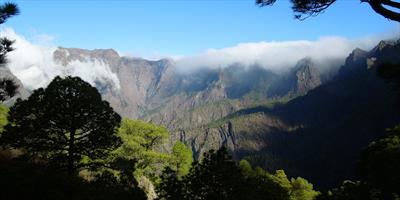Short answer: You can find beautiful beaches on each of them. But that is probably not the answer you are looking for.
Fuerteventura is often being mentioned as the one with best beaches. Mainly on its north end (near Corralejo) and south end (Costa Calma / Jandia peninsula) it offers gold sand beaches with amazing length (you can walk all day and still won’t get to the end), width (sometimes the sand goes several kilometers inlands) and beauty, which you won’t find anywhere else in the Canaries or Europe. For more detailed information on the best locations see where to stay in Fuerteventura.
Things to Know about Canary Islands Beaches
1) White Sand vs. Black Sand
One thing you should know about Canary Islands beaches is that there are two main types: beaches with white/gold sand and beaches with black, volcanic sand (because all of the Canary Islands have volcanic origin). Personally I don’t consider one type superior to another (you don’t notice any difference if you close your eyes), but there are many people who prefer the white beaches as the dark ones don’t feel right to them.
If you do prefer the white ones, then Fuerteventura is really a strong candidate as most of its beaches are white. However, you can also find big white sand beaches on the other islands, particularly Gran Canaria (the beach with the dunes in Maspalomas/Playa del Ingles in the south, or the beaches in the capital Las Palmas – more details here) and Tenerife (generally beaches in the popular resorts or the big Teresitas beach near the capital Santa Cruz – most of these are artificial; see best areas in Tenerife).
I particularly like the beach in Maspalomas in Gran Canaria, because it’s located directly in the resort (a few minutes’ walk from your hotel), but so big and wide (and bordered by the dunes) that it doesn’t feel like that. It is probably closest you can get to Fuerteventura beach experience outside Fuerteventura.
2) Wind
Unfortunately some of the best beaches can often get very windy and I mean the kind of windy that actually hurts. This is one downside of Fuerteventura, which is known for strong winds. It is common to find shelters on Fuerteventura beaches built with stones to protect people from the wind (but most or all of them will be taken unless you come very early in the morning).
Again, don’t get me wrong, you can experience many days on Fuerteventura with just a gentle breeze or no wind at all, but be prepared for the windy days too. Moreover, wind is not limited to Fuerteventura and it can be as strong on the other islands. Different locations on the same island or even different sections of the same beach can have very different wind conditions at times.
One good indicator of frequent strong winds is how popular the town or beach is for surfing or windsurfing. For instance, the south-east coasts of Tenerife (El Medano) and Gran Canaria (Pozo Izquierdo, Bahia Feliz) are world-class windsurfing locations and the wind blows accordingly.
For a more detailed discussion of Canary Islands weather patterns (mainly temperature, wind and rain) see this page.
3) Surfing and Water Sports
If you enjoy surfing, windsurfing, kite surfing or other water sports, you will find many beaches (on any of the big Canary Islands) perfect for these. If you don’t, in some places the number of surfers (often in surfing courses) can be slightly overwhelming. Unfortunately this is often the case in the best locations on the best beaches, or in the resorts (usually there are some sections of the beach where these sports are prohibited). It is generally the same on all the islands and varies by location. Solution: Rent a car and go to a remote beach which you will have all for yourself.
4) Waves vs. No Waves
If you are like me, you like some waves on your beach. They are fun even without a surfboard – to me waves are one of the main points of bathing in the sea. Conversely, if you are coming to the Canaries with small children, you will probably prefer a beach protected from waves.
There is again no big difference between the islands – on each of them you will find beaches with huge waves at times, as well as those completely protected from them – typically in the resorts, although some resorts have more family friendly beaches than others. If waves are a problem (or a requirement), pay attention to this when selecting location on your particular island.
5) Risks and Lifeguards
Although the beaches may look idyllic and waves can be fun, note that the currents can get extremely strong in the ocean and there have been cases of swimmers unable to get back to shore when caught in one. This is one downside of the “remote all for yourself” beaches, which have no lifeguards and no warning system in place. In the resorts lifeguards are common and will tell you if you get too far in the water in dangerous conditions. In any case, be careful. Respect the ocean and don’t underestimate it.
6) Beach Infrastructure
Another good part of the popular beaches in resorts is that they usually have toilets, showers, restaurants and the usual beach infrastructure (some beaches admittedly better than others). Obviously you won’t find these on the remote beaches. Same for all islands, although Fuerteventura scores some points here again – the long beaches in the north and south do have lifeguards and some infrastructure in some places even far away from the towns. Teresitas beach on Tenerife, which is also out of town, has good infrastructure too.
Best Areas on Individual Islands
See the pages below for detailed discussion of the strengths and weaknesses of different areas and different resorts on individual islands:
